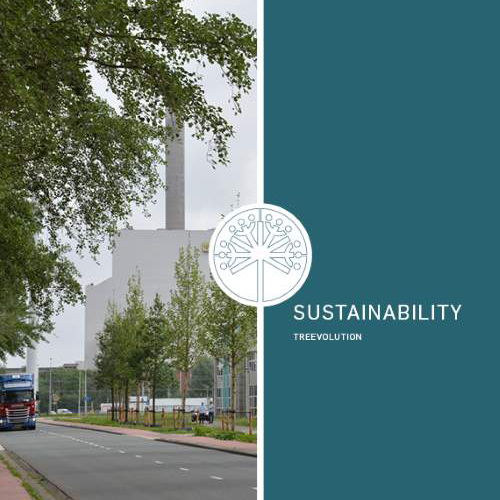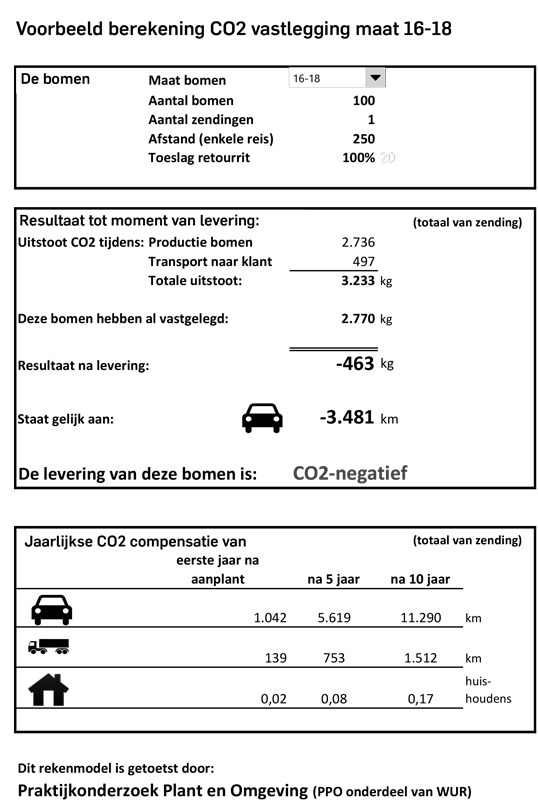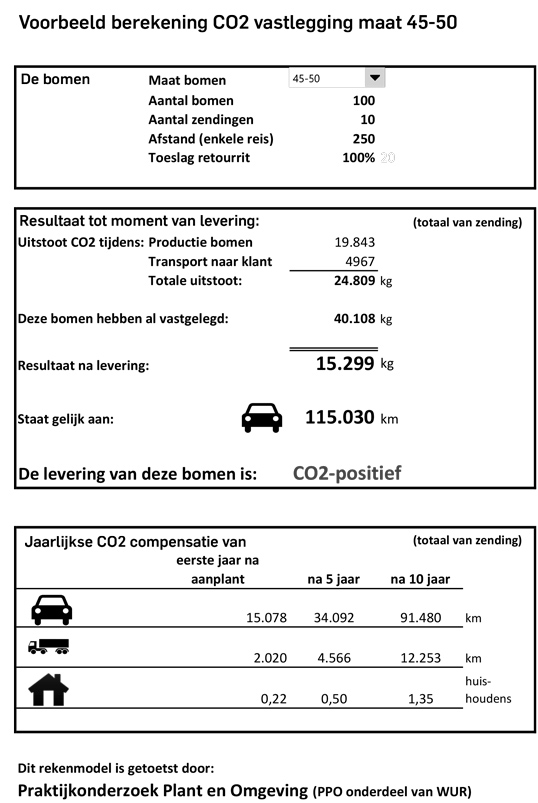

CALCULATION MODEL FOR CO2 CAPTURE BY TREES
In order to obtain greater insight into the impact of trees on the living environment, Van den Berk Nurseries has developed a calculation model in partnership with Applied Plant Research Lelystad (PPO), which is part of Wageningen University & Research. At the request of Van den Berk, this unit has studied the environmental benefits of various sizes of trees. In 2011 the CO2 capture by trees with a stem girth from 14-16cm to 90-100cm was studied and recorded. Our own company’s CO2 emissions were also studied. As expected, Van den Berk’s CO2 emissions are negative. The annual emissions of the total nursery – including the transportation of trees to customers – is 1,500 tonnes of CO2 per year, while the trees themselves capture 2,000 tonnes. In 2012 these results were linked to the emissions study by EVO, the association for companies with their own transport fleets.
Calculation model for projects
The outcomes of both studies were combined in order to devise a calculation model. This model enables us to calculate the environmental benefits generated by particular sizes of trees, after deducting the CO2 emitted during production and transportation to the customer. We can use this model as a tool to help customers achieve their targets.
For instance, we can work out how many trees, in which sizes, need to be planted to compensate a given level of CO2 emissions. If the plans have already been developed and the plant list is known, we can also calculate the environmental benefits of the trees incorporated in the project. In addition, we can use the model to calculate the amount of CO2 captured by the trees after 1 year, 5 years and 10 years. The outcomes can be used for internal and external communication or to substantiate choices. The model has been assessed by Applied Plant Research Lelystad.


 English
English
 English (United Kingdom)
English (United Kingdom)
 Nederlands
Nederlands
 Nederlands (België)
Nederlands (België)
 Deutsch
Deutsch
 français
français
 čeština
čeština
 polski
polski
 español
español
 română
română
 dansk
dansk
 svenska
svenska
 magyar
magyar
 Türkçe
Türkçe
 slovenčina
slovenčina
 русский
русский
 norsk
norsk